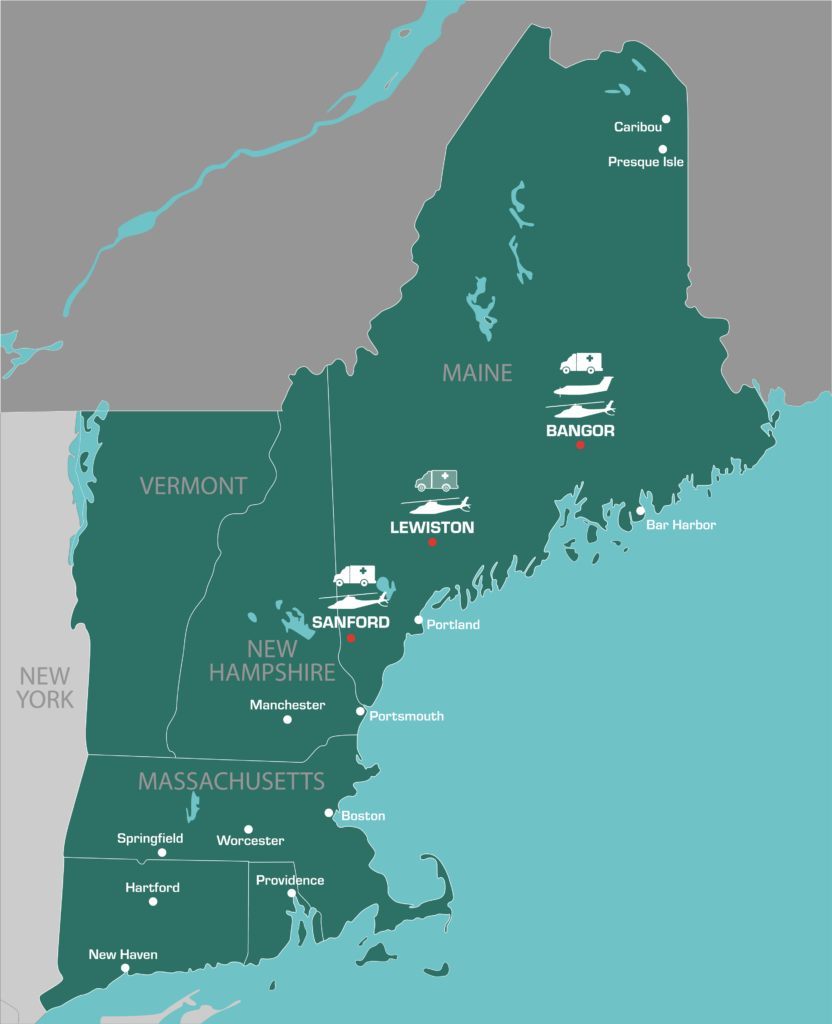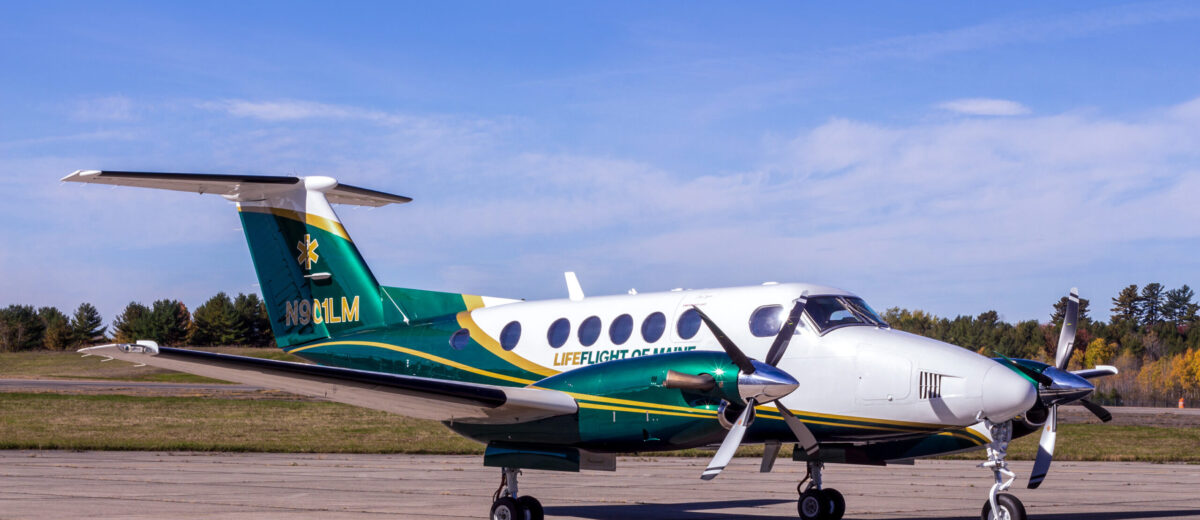Updates from the Flightdeck: Our Fleet, Our Team, Our Partners, and Our Infrastructure
Dear Friends,
In our previous issue of Dispatches, we committed to three resolutions for 2024. The first one, which is the core of the LifeFlight mission, is to continue to expand access to critical care and medical transport for patients across the state of Maine. We are delighted to report that five months in we have several exciting new developments toward that goal to share with you. Access and transport depend on four interrelated components — our fleet, our team, our partners, and our infrastructure. We are surging forward on all four fronts simultaneously.
Our Fleet
- The combination of Maine’s vast expanse, rugged landscape, challenging weather, rural population, and a fragile healthcare system demands an equally complex and deliberately designed medical transport fleet that connects Maine’s most ill and injured patients to the care they need.
- With help and support from U.S. Senators Angus King and Susan Collins, in late March we learned that our $1.92 million proposal for three specialized critical care ground ambulances was included in the $4,371,000 in Congressionally Directed Spending to support rural healthcare and emergency medical services across Maine. Our ground transport program in Bangor, which launched late last year, is already filling a vital need. This funding will significantly enhance our existing program and allow us to expand the service to our bases in Lewiston and Sanford, which we plan to do by the end of the year.
- We are moving forward with a plan to replace our 25-year-old airplane, “Lima Mike.” Maine has the most complex and challenging aviation weather in the continental United States. Low visibility due to fog, slow moving storm systems, and icing conditions are common occurrences. There are many days where weather grounds the helicopter fleet, and the airplane is the only asset flying. The size of Maine itself poses another significant challenge. In addition to its weather capabilities, the airplane flies twice as fast as the helicopter and is more suitable for longer range transport. The new aircraft will also be configured with Maine in mind to utilize shorter runways than can be used by traditional medical aircraft.

Our Team
- Like many healthcare organizations, the pandemic had a dramatic effect on LifeFlight’s staffing situation, with many clinicians and pilots either leaving the industry or opting for less demanding positions. For the past 18 months, we have made a concerted effort to bolster our national recruiting efforts to attract new staff and to strengthen our compensation package to retain existing staff. Our aviation team is nearly fully staffed, positions that we’ve struggled to fill in the past are now competitive with several qualified applicants, and some former crew members are returning to LifeFlight.
- We are also expanding our team to meet the growing demand for LifeFlight services. LifeFlight now employs more than 110 people, nearly all of whom live in and love Maine. These are solid jobs that contribute to Maine’s economy.
Our Partners
- In January, we hired Kyle Madigan as the first Director of Client Relations. Kyle has quickly become acclimated to some of the unique challenges we face in providing critical care transport to the people of Maine and has gained important insights through his initial visits with teams at hospitals and EMS agencies. Kyle has also been tasked with reorganizing and reinvigorating our outreach, including Ground Safety Courses (GSC) and special events for providers. One week in the last month we received requests from four towns for a GSC, including the Lee Fire Department who said, “We’d love to have this class as we’ve had LifeFlight assist us twice in the last five months”.
- In late April we attended the Maine Governor’s Conference on Tourism, where we made great connections that will help us better care for the 15.3 million people who come to Maine each year. Last year, 6% of our transports were for people “from away,” many of whom assume that health care here is as readily available as it is where they live. We are working together with partners in the outdoor recreation and tourism space to think proactively about what we can do better and differently, as more visitors and Mainers continue to explore Maine’s remote attractions.
Our Infrastructure
LifeFlight has always played a pivotal role in partnering with communities, airports, and hospitals to lead the way on improving and expanding Maine’s aviation infrastructure. A runway at a rural Maine airport is a critical healthcare access point, because LifeFlight can land an ICU there when needed.
- We are working with hospitals and communities to rebuild or improve helipads and runways. We are making investments in additional weather stations, signage, deicing equipment, and other enhancements that will have immediate tangible benefits for LifeFlight patients, increasing the speed and reliability of LifeFlight’s response when minutes matter.
- Using federal grant dollars, LifeFlight has become a national leader in the development of a comprehensive runway camera network to aid our pilots in performing their pre-flight safety assessments. Being able to see if a runway is plowed or get a real-time view of cloud cover is another way we enhance our reliability. LifeFlight, in partnership with the Federal Aviation Administration (FAA), made these cameras public to enhance aviation safety throughout the state. You can see them for yourself by visiting https://weathercams.faa.gov.
- Finally, LifeFlight and the FAA are making huge enhancements to the flight route system. These allow helicopters to fly using only instrumentation at altitudes of several thousand feet in the same way and with the same air traffic control safety as a commercial airliner at 40,000 feet. The first of these enhanced flight routes is being certified between Bangor and Bar Harbor, with many more to come.
One thing that all of these components have in common is YOU. Your support makes our work possible.
We hope this issue provides insights and information that you find valuable. We’d love to hear your comments, ideas, and questions. And if you learn something new, please tell your family and friends. We want more people in Maine to know about LifeFlight before they need us.
Sincerely,
Joe Kellner
CEO, LifeFlight of Maine
Kate O’Halloran
Executive Director, The LifeFlight Foundation

